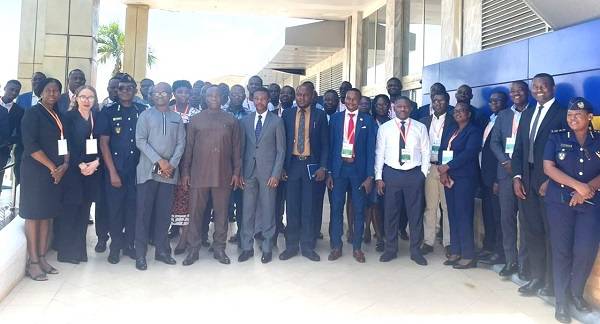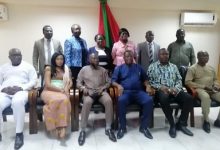
About 50 tax officials are undergoing training on the use of geospatial analytics to maximise tax mobilisation within Ghana and other countries in the West African sub-region.
Geospatial analytics is used to add timing and location to traditional types of data and to build data visualisations.
The visualisations include maps, graphs, statistics and cartograms that show historical changes and current shifts.
Organised by the West Africa Tax Administration Forum (WATAF) in partnership with the Ghana Revenue Authority (GRA) and HM Revenue and Customs, United Kingdom (UK), the training brought together participants from Ghana, Guinea Bissau, Niger, Nigeria, Benin, Sierra Leone, Guinea, Liberia, The Gambia and Uganda.
Opening the event in Accra yesterday, Mr Daniel Adisi, Deputy Commissioner of Operations, GRA, said the workshop was to train and equip tax officials in ECOWAS Member States with the knowledge and skills necessary to use geospatial analytics for tax purposes.
This workshop, he explained, was expected to provide tax officials in ECOWAS Member States with the understanding of how geospatial analytics could be used to improve tax administration and to help increase revenue mobilisation which was the ultimate goal of tax administrators.
He stated that, the training would provide tax administrators with relevant geospatial information, such as the geographic location of both formal and informal businesses and other information to be able to identify tax payers.
Additionally, Mr Adisi said that the training was also designed with objective of improving tax compliance and enforcement and facilitate cross-border collaboration among tax administrations in the region.
“It is my hope that revenue administrators will embrace this collaboration and enhance sharing of information on tax administration among ECOWAS Member States.
You will all agree with me that low compliance among taxpayers is a big challenge within the tax administration therefore reliable data base on taxpayers is very necessary,” the Deputy Commissioner added.
He said, the introduction of the geospatial analytics was timely as the GRA builds its capacity to roll out the collection of rent and property taxes.
“This is a very good initiative for us, especially as we begin processes to collect taxes bordering on rent and property. After the training, we can boast of improved skills that will help the tax administration move to another level in revenue mobilisation even at the district and local level,” Mr Adisi stated.
Dan-Asade Ozayashi, Training and Capacity Building Manager, WATAF, said the training was to promote knowledge sharing and drive activities aimed at enhancing tax administration capacity and revenue mobilisation efforts.
He explained that the use of geospatial analytics was crucial in today’s tax mobilisation efforts as businesses have embraced the use of digital platforms in their operations.
“Most businesses have now gone digital so tax administrators must also be ahead of the curve by employing advanced technology to identify tax payers and enhance compliance,” he added.
A representative of HM Revenue and Customs, Nicholas Kessie, said geospatial analytics was a relevant tool for enhancing tax administration and provides an effective means of ensuring tax compliance.
He reiterated the need for the deployment of advanced technology and equip tax officials with the requisite skills in tax mobilisation
BY CLAUDE NYARKO ADAMS







